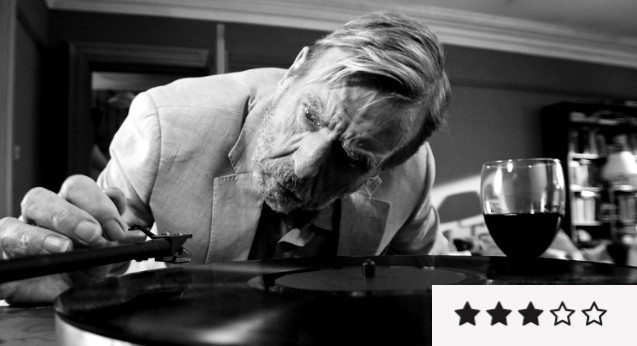The Party review: black comedy and venomous drama in single setting snark-fest


Writer/director Sally Potter recently addressed the question of why she shot her new film, The Party, in black and white. According to Potter, monochrome is “much more colourful from an emotional point of view, because people can project their imaginary sense of realism into what is a slightly obstructed image.”
It’s an interesting discussion: the concept of an imaginary sense of realism, and black and white as a kind of emotional outline, encouraging viewers to fill in the details. But the filmmaker was perhaps a little more earnest – and a lot more direct – in her comments immediately following: “Also, of course, it’s the long tail of cinema. A lot of my favourite films were in black and white.”
Filmmakers raised on old movies view monochrome as a natural itch to scratch. This is why going colourless sometimes constitutes style for style’s sake, nostalgia manifesting as meaningless ostentation. Black and white worked in Alexander Payne’s 2013 road trip Nebraska, partly because it represented something about the film’s elderly protagonist (Bruce Dern) – an old-timer from a different era. And it worked in a bizarre sort of way in the ‘Black & Chrome’ edition of Mad Max: Fury Road, the film’s newfound, dusty grisaille transforming a vision of the future into a time capsule for a past that never happened.
But the decision to jettison colour doesn’t sit right in The Party. Potter’s film is a prickly drawing room comedy, with little emotional ambiguity and a sense of realism restricted rather than enhanced by the glaring aesthetic. Drawing room comedies are often reminiscent of plays, generally involving cultured characters being entertained in a person’s home.
When the film clicks into gear, it’s word-slinging at twenty paces, the comedy black and the drama venomous.
The key players in The Party, which takes place in real-time in a single location, are newly elected UK shadow health minister Janet (Kristin Scott Thomas) and her husband Bill (Timothy Spall). A group of their friends drop by to celebrate Janet’s appointment, including the outspoken and acid-tongued April (Patricia Clarkson) and the pregnant Jinny (Emily Mortimer) and her older lover Martha (Cherry Jones). The stressed-out, cocaine-snorting investment banker Tom (Cillian Murphy) also arrives.
The forms of ambiguity Potter does trade in concern motivation and backstory. Why is Bill so down? Why is Tom so anxious? What is with the film’s introductory scene, which depicts, from a first-person point of view (the perspective of an unseen character) a distraught Janet opening the front door and pointing a gun at the camera, before the story jumps back in time? It’s not exactly a friendly hello, infusing an initially civil (or civil-ish, before things get very snarky) affair with trepidation.
Conversation broaches subjects such as the ethics of healthcare, as well as more personally confronting matters. Potter, who wrote the screenplay, has an ear for pointy bon mots and put-downs.
“You’re a first-rate lesbian and a second-rate thinker,” says Patricia Clarkson, who is a highlight as April – deliciously bitchy and sneering. All the cast are very good, with an inconsolably distressed Timothy Spall, and Cillian Murphy probably never dripping so much sweat. Was Murphy sprayed with water before every take?
The black and white approach, however, has an odd effect on the performances. Literally stripped of colour, the cast seem to fight against it, battling to differentiate themselves from a unifying aesthetic. When the film clicks into gear, it’s word-slinging at twenty paces, the comedy black and the drama venomous. Clocking in at a lean 71 minutes, nobody can say The Party overstays its welcome.
Find times & tickets for The Party
















